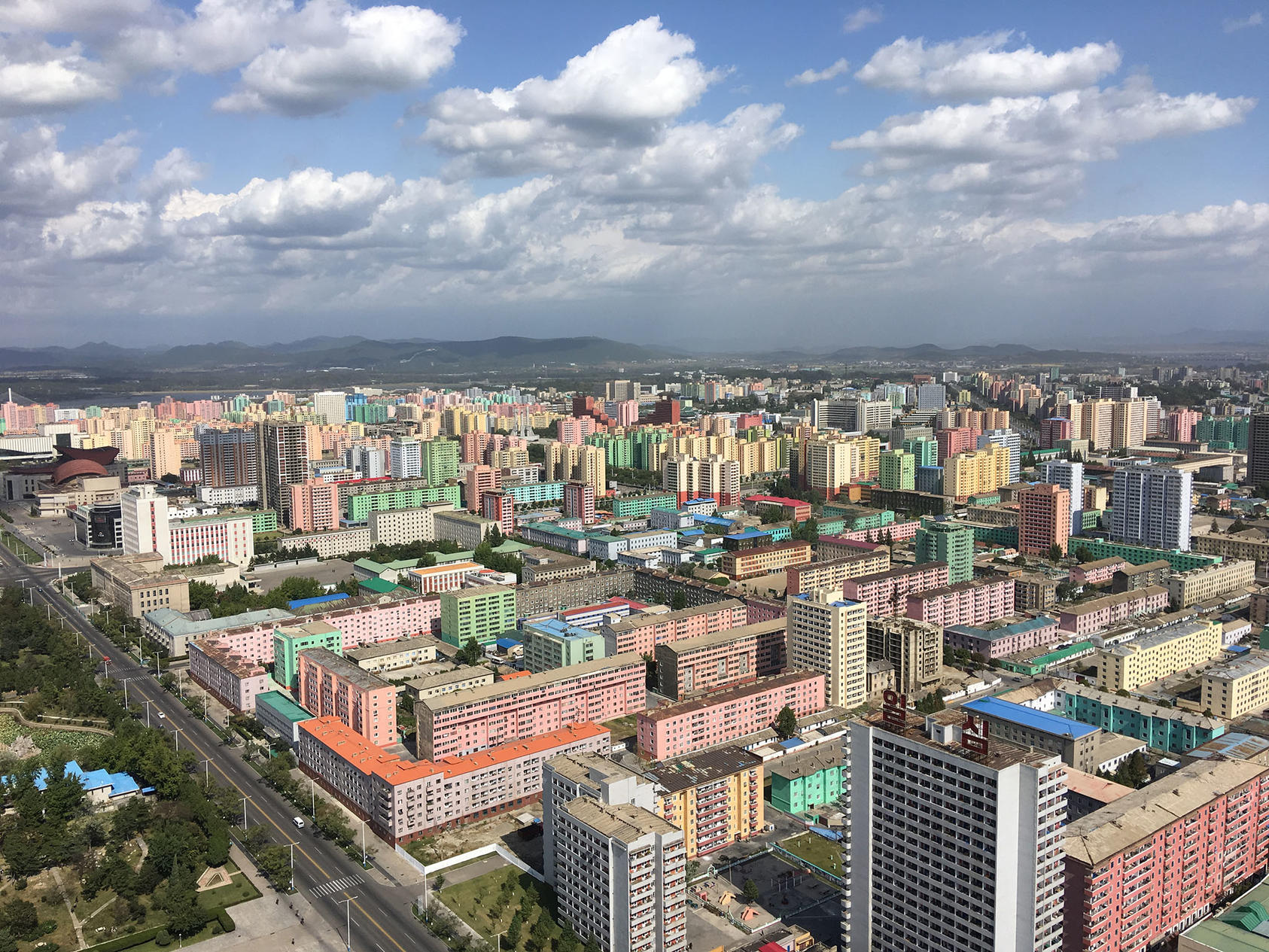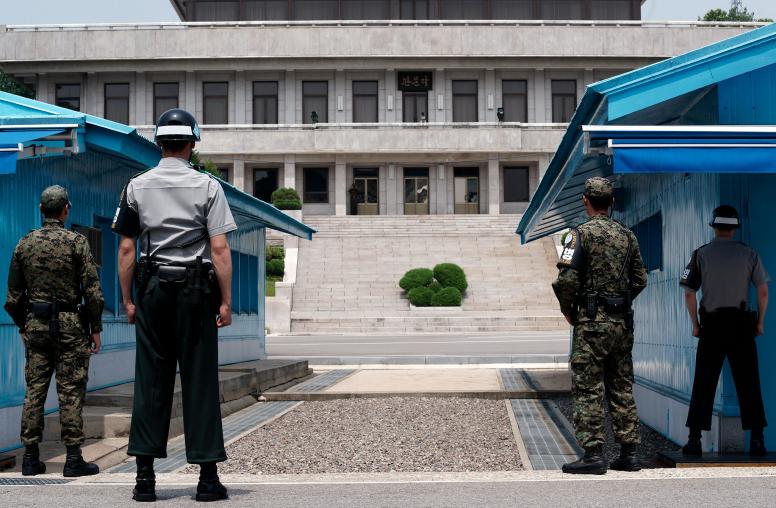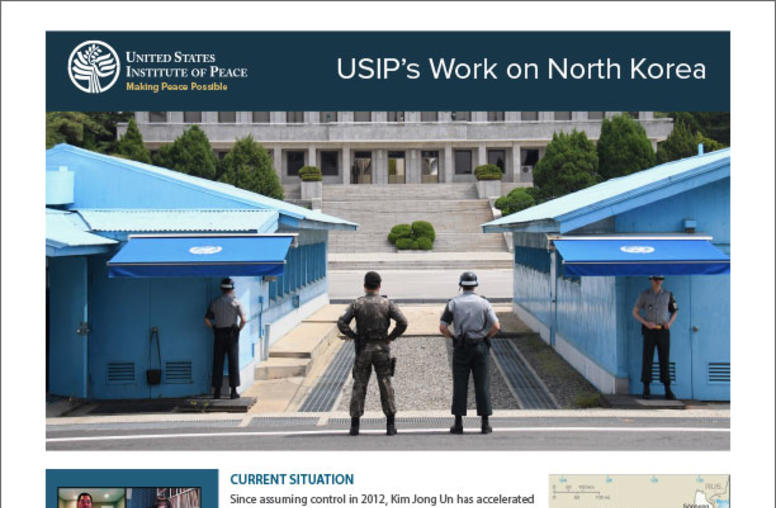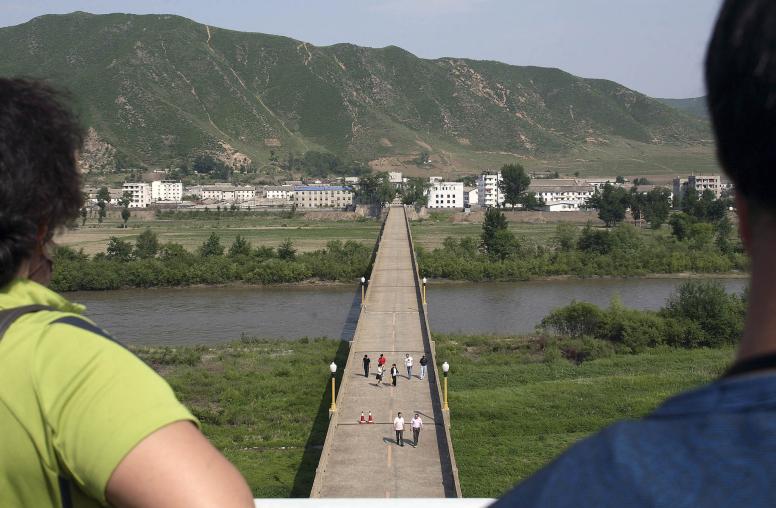North Korea: Coronavirus, Missiles and Diplomacy
The COVID-19 crisis has the potential to ease tensions between Washington and Pyongyang—but it’s more likely negotiations will remain deadlocked.
Despite reporting no cases of COVID-19, North Korea’s poor health infrastructure and proximity to coronavirus hotspots make it especially vulnerable to the deadly pandemic. Increasing the risks, humanitarian workers and medical supplies in the North Korea are limited by travel restrictions and sanctions even as the U.N. sanctions committee provided some exemptions to help deal with the virus. An outbreak of the disease in North Korea could have crippling political and socioeconomic consequences, even threatening its internal stability.

While President Donald Trump has offered assistance to North Korean leader Kim Jong Un to combat the virus and North Korea appears to be quietly acknowledging a potential crisis and need for help, both countries seem unwilling to demonstrate the flexibility needed for real bilateral progress. North Korea has resumed military activities, including multiple ballistic missiles and rocket tests in March, and rejected any engagement with the United States as long as significant sanctions relief remains off the table. For its part, Washington appears to be limiting its olive branch to narrow sanctions exemptions related to coronavirus response rather than offering broader sanctions relief.
Both sides seem to believe they have the upper hand and can wait until the political environment changes in the other country. Unless one or both sides signal a dramatic shift in policy or the COVID situation in North Korea reaches a point of crisis, the ongoing stalemate in bilateral relations will continue for the foreseeable future.
COVID-19 Effects
North Korea’s fight against the novel coronavirus started early, around January 21, when Pyongyang banned all foreign tourists. At the time, China counted fewer than 500 infections and only nine deaths. On the same day, South Korea announced its first infection. The cases of COVID-19 in the South spread at shocking speed, reaching a peak of almost 1,000 a day by late February. However, the country’s prompt and aggressive program of testing and tracing the virus flattened the infection curve and slowed the daily figure to around 100 daily new cases by April 1, earning the nation international recognition for its effective response.
The North, meanwhile, has not reported a single case of COVID-19—an unlikely claim given the number of infections in its neighboring countries, especially China. In early March, a South Korean news agency with access to internal sources in the North Korean military reported that around 200 North Korean soldiers died from the virus and almost 4,000 more were quarantined.
Despite North Korea’s limited quarantine measures, it has sent mixed messages on its desire for international assistance. In February, the Russian government announced that it had provided 1,500 test kits to North Korea. With COVID-related exemptions granted by the U.N. sanctions committee (and therefore, Washington) to several international NGOs, limited supplies are also slowly making their way through the one remaining entry point—the Dandong-Sinuiju opening. This process has been slowed by the need to clear Chinese customs and DPRK border checks as well as the North’s COVID-19 quarantine measures for all workers, vehicles, and goods crossing the border.
It is clear that despite, or possibly because of, its singular ability to isolate itself, North Korea is not prepared for COVID-19. North Korea is by far the poorest nation in the region, saddled with a failing public health system and ravaged by the lack of most basic medical supplies, including medicine, protective equipment, and hospital beds.
Missile Tests
Among North Korea watchers, missiles tests are regarded as a key indicator of the country’s relations with the outside world, especially the United States.
In March, North Korea conducted five short-range ballistic missile and rocket launches, the most recent one being a successful test on March 30 of a “super-large” multiple rocket launcher, according to North Korean state media. Photographs released by North Korea of a March 29 ballistic missile test showed a missile hitting a 100-meter (328-feet) long island in the sea between North Korea and Japan. Assuming the photos are authentic, these short-range tests provide strong evidence that North Korea is making consistent improvements in its missile program.
Pyongyang may also be trying to demonstrate strength and deterrence, both internally and externally, during a period of crisis.
Diplomatic Roadblocks
The missile tests coincided with Trump’s letter to Kim Jong Un offering cooperation and aid to combat the spread of COVID-19. Indicating that Pyongyang’s problems were not with the American president, Kim Yo Jong, the leader’s sister and a senior government official, praised the letter, expressing her brother’s appreciation and noting that the letter had come at a time of “big differences and challenges in developing ties.”
More recently, however, the North Korean Ministry of Foreign Affairs said that Pyongyang had lost “all appetite” for a dialogue with the United States, singling out Secretary of State Mike Pompeo as the culprit. This was a reference to Pompeo’s comments after the G-7 meeting that the international community must continue to apply diplomatic and economic pressure on North Korea over its nuclear and ballistic missile programs.
North Korea’s ire at Pompeo is not new. Pyongyang has consistently blamed the failed Hanoi summit, and lack of success in negotiations in general, on Pompeo and then-National Security Advisor John Bolton. North Korea believes that, while President Trump has demonstrated some flexibility on concessions, his advisors are rigidly holding off on sanctions relief until North Korea takes significant steps toward denuclearization first. With Bolton gone, the secretary of state is now taking the heat.
If history is any guide, North Korea will not want to enter into serious negotiations with the United States during an election year. Pyongyang’s preferred approach is to wait for the election result before probing for an opening. North Korea shouldn’t be too sanguine about a better deal from a potential Democratic administration, though. Democratic frontrunner Joe Biden has taken a tough position on North Korea and some of his advisors were the main architects of the global pressure campaign implemented during President Barack Obama’s second term.
Looking Ahead
As the CSIS Beyond Parallel database suggests, North Korea also has a pattern of conducting more missile and nuclear tests when there is no dialogue, let alone communication, between Pyongyang and Washington. Experience, therefore, would indicate no significant progress in U.S.-DPRK relations in the near future, barring another dramatic move by the U.S. president.
The COVID-19 situation presents a wild-card factor. On one hand, it could provide an unexpected bridge of humanitarian assistance to North Korea. On the other, the pandemic has already overwhelmed the U.S. and the rest of the international community, reducing the space and bandwidth for consideration of less immediate global challenges, such as North Korea’s denuclearization.
Even if the virus becomes a major crisis, like the famine in the 1990s, North Korea would likely seek aid first from allies like China and Russia and only indirectly from the United States through non-governmental and U.N. organizations. And if North Korea accepts some limited assistance from the U.S. related to COVID-19, it will ensure that no denuclearization strings are attached.



